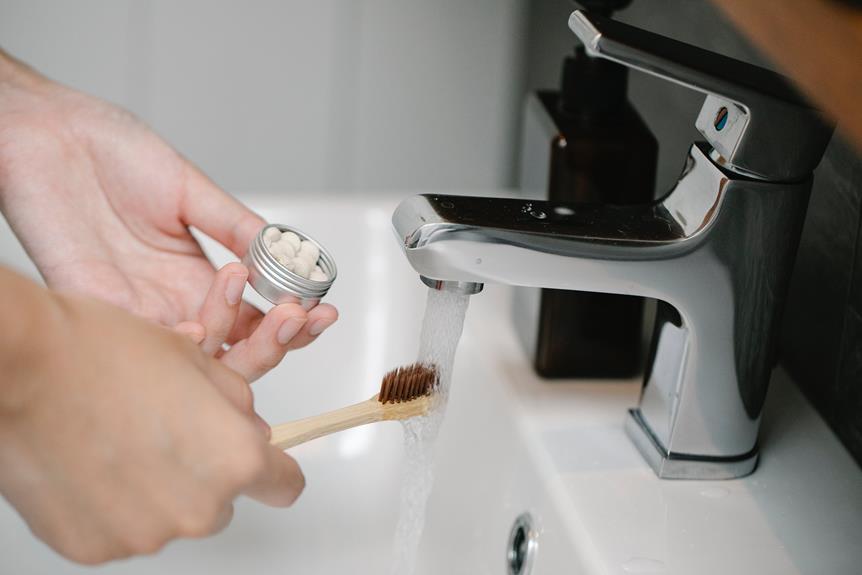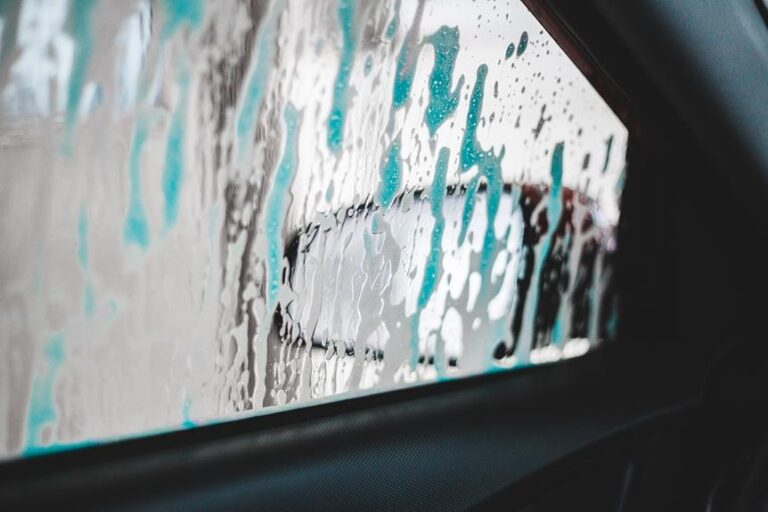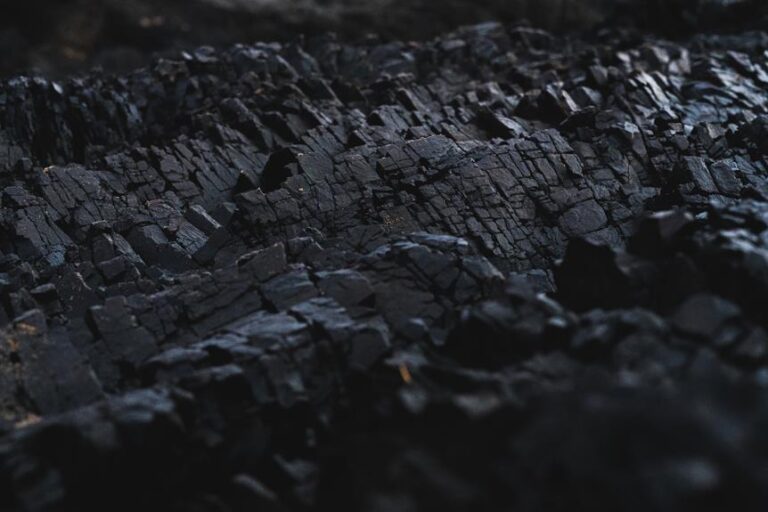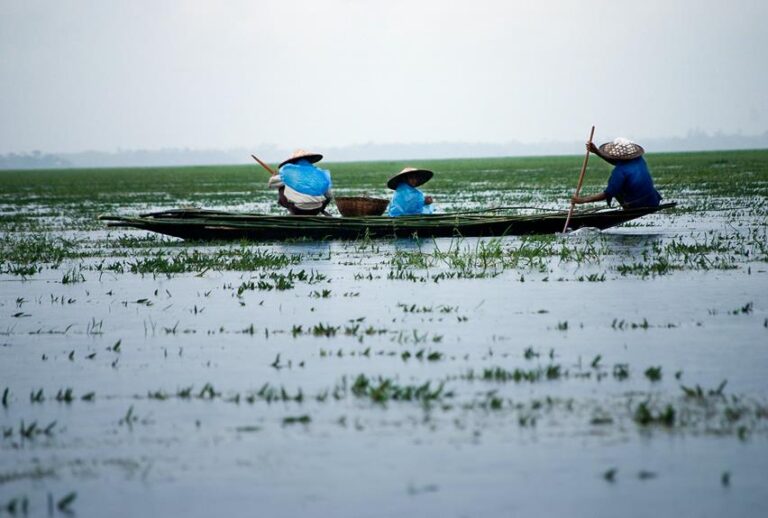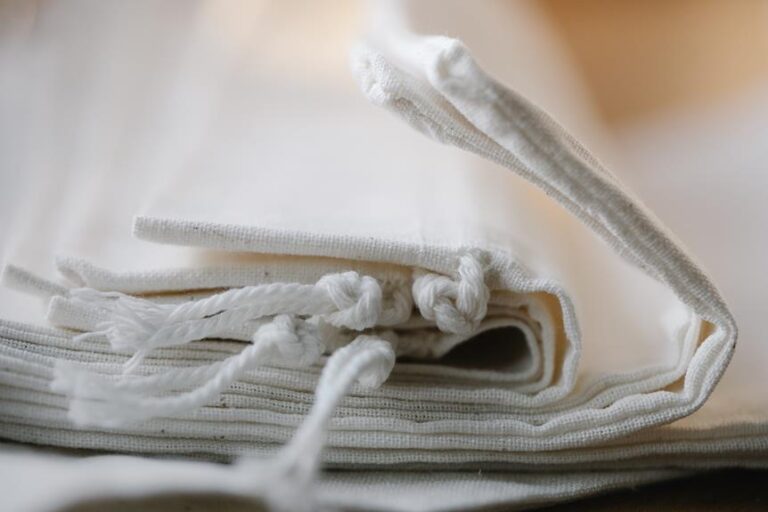14 Efficient Water Saving Techniques for Sustainable Living
Welcome to our guide on 14 efficient water saving techniques for sustainable living. We’re here to show you how you can make a meaningful impact on the environment by conserving water in your daily life.
From installing low-flow showerheads to collecting rainwater, we’ll share practical tips that will not only help you save water, but also contribute to a more sustainable future. Let’s dive in and discover these simple yet powerful ways to protect our most precious resource together.
Install Low-Flow Showerheads
One of the most effective ways we can conserve water in our homes is by installing low-flow showerheads. These showerheads are designed to reduce the amount of water used while still providing a satisfying shower experience. By replacing your old showerhead with a low-flow option, you can save a significant amount of water and reduce your utility bills.
The installation process is simple and can often be done as a DIY project, saving you money on professional installation. In addition to saving water, low-flow showerheads also have other benefits. They can help maintain water pressure and temperature, and some models even come with adjustable settings for different flow rates.
Fix Leaky Faucets
Let’s talk about fixing leaky faucets, a crucial step in conserving water and maintaining a sustainable lifestyle.
There are two options to consider: DIY faucet repairs or seeking professional plumbing assistance. DIY repairs can be cost-effective and relatively simple for minor leaks, but for more complex issues or if you lack the necessary skills, it’s best to call in a professional plumber.
DIY Faucet Repairs
We can easily fix leaky faucets by following simple DIY repairs. DIY faucet maintenance is an effective way to save water and prevent unnecessary expenses.
When troubleshooting faucet issues, start by turning off the water supply and gathering the necessary tools, such as a wrench, pliers, and replacement parts.
The most common cause of a leaky faucet is a worn-out washer, which can be easily replaced by removing the faucet handle and replacing the washer.
Another common issue is a loose or damaged O-ring, which can be fixed by replacing it with a new one. It’s important to tighten all the connections properly to ensure a watertight seal.
Professional Plumbing Assistance
If you’re not confident in your DIY skills, hiring a professional plumber is a wise choice to fix leaky faucets. Professional plumbing maintenance offers several benefits, including:
- Expertise: Professional plumbers have the knowledge and experience to accurately diagnose and repair faucet leaks. They can quickly identify the root cause of the problem and provide effective solutions.
- Time-saving: Hiring professionals saves you time and effort. They can efficiently fix the leak without any trial and error, allowing you to focus on other important tasks.
- Long-term savings: Fixing leaks properly can help you save money in the long run. Professionals ensure that the repairs are done correctly, preventing further damage and reducing water wastage.
- Peace of mind: Knowing that your leaky faucet is in the hands of a professional gives you peace of mind. You can trust their expertise and be confident that the issue will be resolved effectively.
- Guarantees and warranties: Professional plumbers often provide guarantees or warranties for their work. This gives you added protection and assurance that the repair will last.
Collect and Reuse Rainwater
One effective water-saving technique for sustainable living is to collect and reuse rainwater. By installing a rain barrel or a greywater system, you can capture and store rainwater for various household uses.
A rain barrel is a container that collects rainwater from your roof through a downspout. This water can then be used for tasks such as watering plants, washing your car, or even flushing toilets.
On the other hand, a greywater system collects and treats water from sources like sinks, showers, and laundry. This treated water can be reused for irrigation or flushing toilets.
Collecting and reusing rainwater not only helps conserve water resources, but it also reduces your water bill and lessens the strain on municipal water supplies.
Related Post: Ultimate Rainwater Harvesting Techniques for Sustainable Living.
Use a Broom Instead of a Hose to Clean Outdoor Areas
To efficiently clean outdoor areas while conserving water, we can opt for using a broom instead of a hose. Not only does this small change save precious water, but it also has several other benefits that contribute to sustainable living:
- Saves water: By using a broom, we eliminate the need for gallons of water that a hose would use to clean outdoor areas.
- Reduces water waste: Hoses often lead to excessive water runoff, which can contribute to water pollution. Using a broom minimizes this waste.
- Preserves soil health: Excessive water from a hose can wash away topsoil, while a broom helps maintain the soil’s structure and nutrients.
- Promotes mulch benefits: Brooms help distribute mulch evenly, which conserves soil moisture and prevents weed growth.
- Complements rainwater collection: Using a broom aligns with the practice of collecting rainwater, as it helps maximize the use of this precious resource.
Install a Dual-Flush Toilet
Let’s talk about the benefits of installing a dual-flush toilet in our homes.
Dual-flush toilets offer water-saving options that can help us reduce our water usage and contribute to a more sustainable lifestyle. Not only do they provide different flush options for liquid and solid waste, but they also help us save money on our water bills.
Let’s explore the different water-saving toilet options available, discuss the benefits of dual-flush toilets, and share some installation tips and tricks.
Water-Saving Toilet Options
When considering efficient water-saving techniques for sustainable living, one option that stands out is installing a dual-flush toilet. This innovative toilet design allows users to choose between a full flush for solid waste and a half flush for liquid waste, significantly reducing water consumption.
Here are some reasons why a dual-flush toilet is a great water-saving option:
- Saves water: With the ability to use less water for liquid waste, a dual-flush toilet can save up to 68% more water compared to traditional toilets.
- Cost-effective: By reducing water usage, dual-flush toilets can lower your water bills and save you money in the long run.
- Environmentally friendly: Conserving water helps protect our precious natural resources and reduces the strain on water treatment facilities.
- Easy installation: Dual-flush toilets can be easily installed in existing bathrooms without the need for extensive renovations.
- Modern design: These toilets come in a variety of sleek and modern designs, adding a touch of style to your bathroom while saving water.
Benefits of Dual-Flush
Installing a dual-flush toilet offers numerous benefits, making it an ideal choice for sustainable living. This innovative toilet design provides two flushing options: a partial flush for liquid waste and a full flush for solid waste. By using less water for liquid waste, a dual-flush toilet can save thousands of gallons of water each year. This not only reduces water bills but also has a positive environmental impact by conserving this precious resource.
Additionally, the cost savings associated with reduced water consumption can be significant over time. Installing a dual-flush toilet is a simple yet effective way to contribute to water conservation efforts and promote sustainable living.
Installation Tips and Tricks
To ensure a successful installation of a dual-flush toilet, we recommend using the proper tools and following the manufacturer’s instructions carefully. DIY plumbing repairs can be a cost-effective way to upgrade your bathroom and save water. Here are some installation tips and tricks to help you get started:
- Gather all the necessary tools, such as a wrench, pliers, and a screwdriver.
- Shut off the water supply before starting the installation process.
- Remove the old toilet and clean the area thoroughly.
- Follow the manufacturer’s instructions to assemble the dual-flush toilet.
- Double-check all connections and ensure there are no leaks before using the toilet.
By following these steps, you can successfully install a dual-flush toilet and start saving water in your home.
It’s a simple and cost-effective way to make a positive impact on the environment while enjoying the benefits of a modern bathroom.
Only Run the Dishwasher and Washing Machine With Full Loads
We always make sure to run the dishwasher and washing machine only with full loads. This simple practice not only helps us save water but also reduces energy consumption and saves time.
When we wait until the dishwasher or washing machine is full before running it, we maximize the efficiency of each cycle. DIY laundry hacks can also help us get the most out of our machines. For example, using a smaller amount of detergent or adding vinegar to the wash can help remove stains and odors without needing an extra cycle.
Mulch Your Garden to Reduce Evaporation
By covering our garden with mulch, we significantly reduce evaporation and conserve water. Mulch acts as a protective layer that prevents moisture from escaping the soil through evaporation. This not only helps to keep the soil moist for longer periods but also reduces the need for frequent watering.
Here are some benefits of mulching and organic mulch options:
- Mulching helps to regulate soil temperature, keeping it cool in hot weather and warm in cold weather.
- Organic mulch options, such as wood chips, straw, or compost, improve soil fertility as they break down over time.
- Mulch suppresses weed growth, saving time and effort spent on weed control.
- It helps prevent soil erosion by reducing the impact of heavy rain or wind on the soil surface.
- Mulching adds aesthetic appeal to your garden, creating a neat and tidy appearance.
Use a Bucket to Catch Water While Waiting for It to Warm up
While waiting for water to warm up, we can conserve and reuse it by using a bucket to catch it. Catchment techniques like this can help us save water and reduce our environmental impact.
Instead of letting the cold water go down the drain, we can collect it in a bucket and use it for various purposes, such as watering plants or flushing toilets. This simple practice not only saves water but also reduces our water bills. Additionally, it aligns with the use of energy-efficient appliances, as it reduces the need to run the tap for extended periods.
Water Your Plants Early in the Morning or Late in the Evening
When is the most optimal time to water our plants to maximize efficiency and conserve water? The answer lies in watering them early in the morning or late in the evening.
Here are five reasons why this is the best time to water plants:
- Reduced evaporation: Watering in the morning or evening ensures that the water has enough time to penetrate the soil before the sun’s heat causes excessive evaporation.
- Healthier plants: Watering at these times allows the plants to absorb the moisture they need to thrive, promoting their overall health and growth.
- Prevents fungal diseases: Watering in the morning or evening helps to prevent the development of fungal diseases, as the leaves have time to dry out before the cooler nighttime temperatures.
- Conserves water: By watering when it’s cooler, less water is lost to evaporation, resulting in water conservation.
- Mulching benefits: Watering in the morning or evening allows for the effective use of mulch, as it helps to retain moisture in the soil for longer periods.
Install a Water-Efficient Irrigation System
We recommend incorporating a water-efficient irrigation system to maximize water conservation and efficiency in our sustainable living practices.
Installing a water-efficient irrigation system is a great way to ensure that your plants receive the necessary water while minimizing waste. Here are some installation tips to help you get started.
First, choose a system that suits your specific needs, such as drip irrigation or a weather-based controller.
Next, plan the layout of your system, considering factors like plant types, soil conditions, and slope.
Make sure to use high-quality components and follow manufacturer instructions during installation.
Once your system is up and running, regular maintenance is crucial to ensure its effectiveness. Check for leaks, clogs, and broken parts regularly, and make any necessary repairs promptly.
Adjust the watering schedule based on weather conditions to avoid overwatering.
Use a Pool Cover to Minimize Evaporation
To further enhance water conservation efforts, let’s explore the effective technique of using a pool cover to minimize evaporation and preserve our valuable water resources.
Using a pool cover offers numerous benefits, including:
- Reducing water evaporation by up to 95%
- Preventing debris, leaves, and insects from entering the pool
- Retaining heat, thereby reducing the need for pool heaters and saving energy
- Decreasing pool chemical usage, leading to cost savings and environmental benefits
- Extending the swimming season by keeping the water warmer for longer
When it comes to pool cover types, there are various options available, such as solar covers, which use the sun’s energy to heat the water, and solid covers, which provide excellent protection against evaporation and debris. Additionally, automatic pool covers offer convenience and ease of use.
By using a pool cover, we can make a significant impact on water conservation and create a more sustainable and enjoyable pool experience for all.
Let’s join together in taking this simple yet effective step towards preserving our precious water resources.
Install a Water-Efficient Water Heater
Continuing our exploration of efficient water-saving techniques for sustainable living, let’s now delve into the importance of installing a water-efficient water heater to further reduce our water consumption and promote environmental responsibility.
Water heater maintenance is crucial for ensuring its efficiency and longevity. Regularly inspecting and cleaning the tank, checking for leaks, and flushing out sediment buildup are essential steps to keep your water heater functioning optimally. By doing so, you can prevent water wastage and save both water and energy.
When it comes to choosing a new water heater, opt for energy-efficient models. These heaters are designed to use less water while providing the same level of performance. Look for features like low-flow showerheads, programmable timers, and insulation to minimize heat loss.
Opt for Drought-Resistant Plants in Your Garden
When it comes to saving water in our gardens, opting for drought-resistant plants is a smart choice.
Water-wise landscaping options not only help conserve water, but also offer a range of benefits.
Drought-tolerant plants are low maintenance, require less watering, and can withstand dry conditions, making them an excellent choice for sustainable gardening.
Water-Wise Landscaping Options
We have found that incorporating drought-resistant plants into our garden has significantly reduced our water consumption. Not only are these plants able to withstand dry conditions, but they also offer a range of benefits for water conservation and sustainable living.
Here are five reasons why opting for drought-resistant plants in your garden is a water-wise landscaping option:
- They require less watering, saving you time and money.
- They’re low maintenance, reducing the need for fertilizers and pesticides.
- They provide habitat and food for pollinators, promoting biodiversity.
- They can enhance the beauty of your garden with unique shapes, colors, and textures.
- They can increase the value of your property by creating an attractive and sustainable outdoor space.
Benefits of Drought-Tolerant Plants
Opting for drought-resistant plants in your garden offers numerous benefits for water conservation and sustainable living. Drought-tolerant landscaping, also known as xeriscaping, is a practical and eco-friendly approach to gardening that conserves water resources and reduces maintenance needs. By choosing plants that are well-adapted to dry conditions, you can significantly decrease your water usage without sacrificing the beauty of your garden.
One of the major benefits of using drought-tolerant plants is their ability to thrive in arid environments with minimal irrigation requirements. These plants have evolved to survive in water-scarce regions, making them perfect for areas prone to drought. By reducing the amount of water needed for irrigation, you can contribute to water conservation efforts and help preserve this precious resource.
In addition to saving water, drought-resistant plants also offer long-term cost savings. With their low water needs, you can reduce your water bill and save money in the long run. Moreover, these plants require less maintenance, such as mowing, pruning, and fertilizing, which further reduces your time and expenses.
Furthermore, opting for drought-resistant plants promotes sustainable living by supporting biodiversity and attracting beneficial wildlife. These plants provide habitat and food sources for pollinators like bees and butterflies, as well as birds and other small animals. By creating a diverse and resilient ecosystem in your garden, you contribute to the overall health and balance of the environment.
Educate Yourself on Water-Saving Habits and Techniques
One key step towards sustainable living is to actively learn and adopt water-saving habits and techniques. By educating ourselves on these practices, we can make a significant impact on conserving water and protecting our environment.
Here are some water-saving habits and techniques to consider:
- Install water-saving appliances such as low-flow showerheads and toilets, which can significantly reduce water usage without compromising performance.
- Practice rainwater harvesting by collecting rainwater in barrels or tanks. This water can be used for activities like watering plants or cleaning, reducing the need for tap water.
- Fix leaks promptly to prevent water wastage. A small drip can waste hundreds of gallons of water over time.
- Be mindful of your daily water usage, such as turning off the faucet while brushing your teeth or only running the dishwasher and washing machine when they’re full.
- Consider landscaping techniques like xeriscaping, which uses drought-tolerant plants and efficient irrigation systems to minimize water consumption.
Conclusion
In conclusion, by implementing these efficient water saving techniques, we can actively contribute to sustainable living and ensure a better future for our planet.
Let’s take small steps like installing low-flow showerheads, fixing leaky faucets, and collecting rainwater to make a big difference.
Remember, every drop counts! So, let’s join hands and become water-saving warriors, protecting our precious resource for generations to come.
Together, we can create a greener, more sustainable world. Let’s make it happen!
